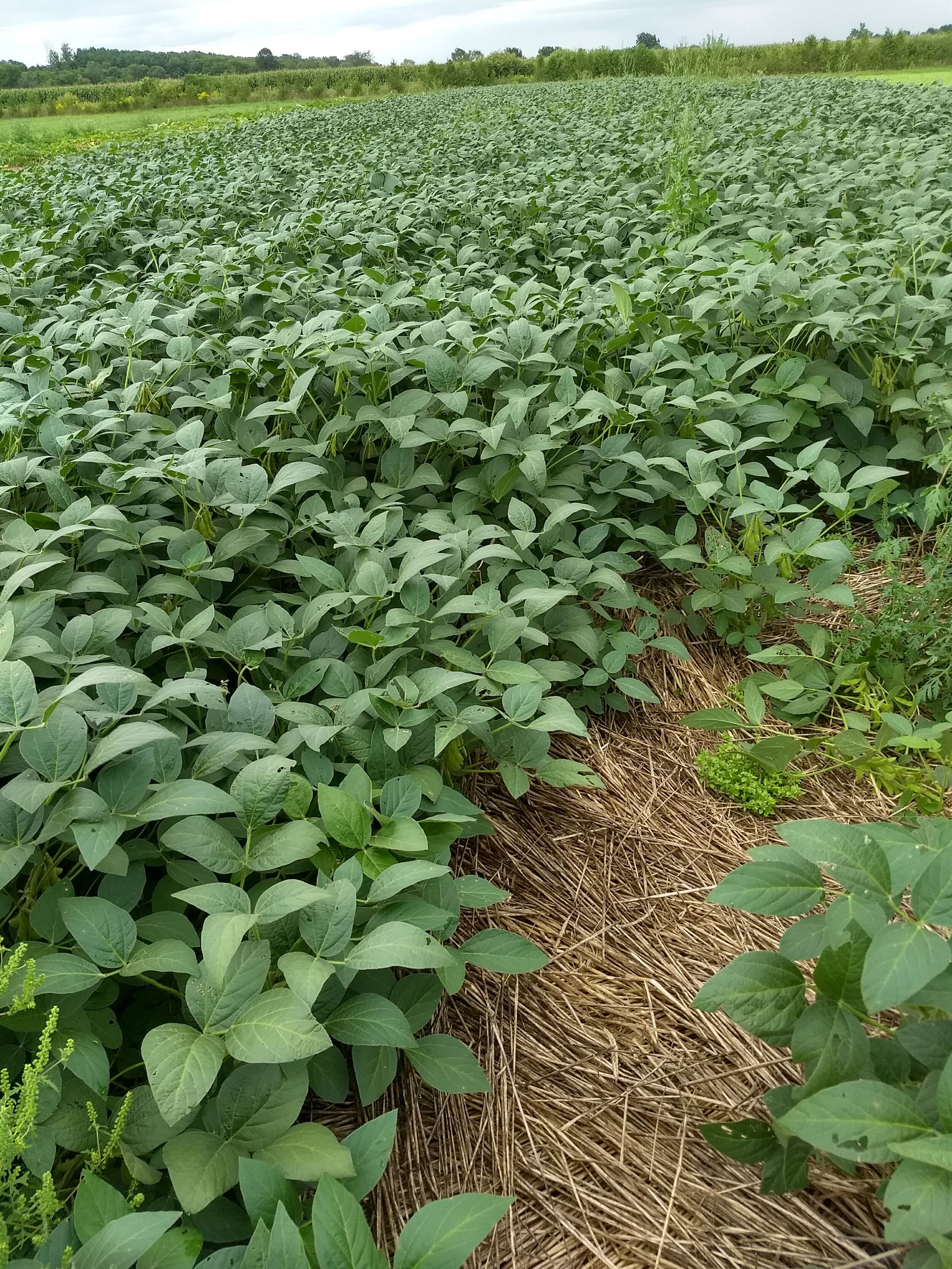The Life Systems Benefits of Not Grazing Livestock
No-till organic soybeans in crimped rye, from Orchard Hill Farm, British Columbia, Canada
By Melissa Hoffman
Many grass-animal advocates fail to account for potential net life-systems benefits of shrinking the footprint of livestock-based grazing operations--even small-scale ones. Using responsible disturbance on small portions of land for the purpose of growing staple, storable crops combined with re-wilding and perennial-cropping previously-grazed lands could significantly increase food yields AND wildlife habitat and reverse the alarming trends of diminishing numbers of insects, birds, and other wild animals.
For example, ONE THIRD an acre of land (using small scale responsible disturbance/tillage) can produce about 520 pounds of organic soybeans (that's 83,200 grams of protein), which is over 1849 days’ worth of the entire protein needs of one person, presuming 45g/protein per day. That’s enough to supply the full protein needs of a family of 5 for 1 year—and that’s without considering the protein content of other foods in our daily diet. We’ve focussed on protein as a macro-nutrient here as a simple way of reviewing the comparisons. Of course micronutrient content and the relative health benefits of consuming whole plants plays into consideration in assessing the quality of the foods we consume. But for the purposes of comparison, we’re looking through the lens of ‘protein’ since so many who advocate for grazing systems use this macronutrient as a measure of yield.
The area needed to produce the same amount of protein supplied milk or meat (and let us presume there's no grain/tillage supplement) is far larger, depending on many different factors. So the ability to re-wild all grazing/haying land and focus on growing food over smaller tillage/disturbance areas for human consumption would provide a far larger net gain in LIFE systems, than would shifting to all-grass grazing meat production.
Old hayfields and pastures unsuitable for tillage could be planted with perennial/agroforestry crops in wide strips, interspersed with pollinator habitat mown on 2-4 year rotations. Such plantings would provide valuable habitat for birds. We could reduce total tillage agriculture by 75% simply by no longer keeping livestock that rely on grain crops. Plus, we would restore valuable habitat for wildlife currently displaced by tillage, haying, and grazing, as well as other forms of human development. These are aspects of regenerative agriculture that are often overlooked in favor of focussing on sequestering carbon in the soil via grazing cows as a substitute for conventionally-raised livestock. But grazing carries with it many costs, especially the opportunity loss of native wildlife restoration.
ORGANIC SOYBEAN YIELDS=30 BUSHELS PER ACRE. 1 BUSHEL=52.2#s DRY WEIGHT =1560#s per acre. This is a 2011 USDA figure, but Cornell University places organic soybean yields at 55 bushels per acre. I’ve used the conservative figure here to make a still-dramatic point.
SOYBEANS: 160g protein/pound (35.3g protein per 100g soybeans)
GRASS-FED COW 117g protein/pound
SOYBEANS: 1/3 acre=520#s = 83,200 grams of protein
GRASS-FED COW 1/3 acre =14,152g protein presuming 1.8 acres of pasture needed per rotationally-grazed cow (likely is more).
Soybeans yield twice the protein as beef on 1/6th the land, they're a healthy, storable staple food, and growing them for direct human use allows 5x the amount of land to be re-wilded or put into agroforestry.
Calculations:
52.2#s dry weight soybeans per bushel, 30 bushels/acre yield organic soybeans
30x52.2= #s per acre=2453.4
817.8 #s per .3 acre. Protein in 1# soybeans=160g (35.3g protein in 100g of dried soybeans)1#=453g 4.53x 35.3=160g of protein in a # of soybeans. 160 x 817.8 (grams of protein times #s of soybeans grown on 1/3 acre)=83,200s of protein on 1/3 acre. Divided by 45g /day = 2907 days of protein for 1 person, or 5 people’s sole protein needs for 1 year.
